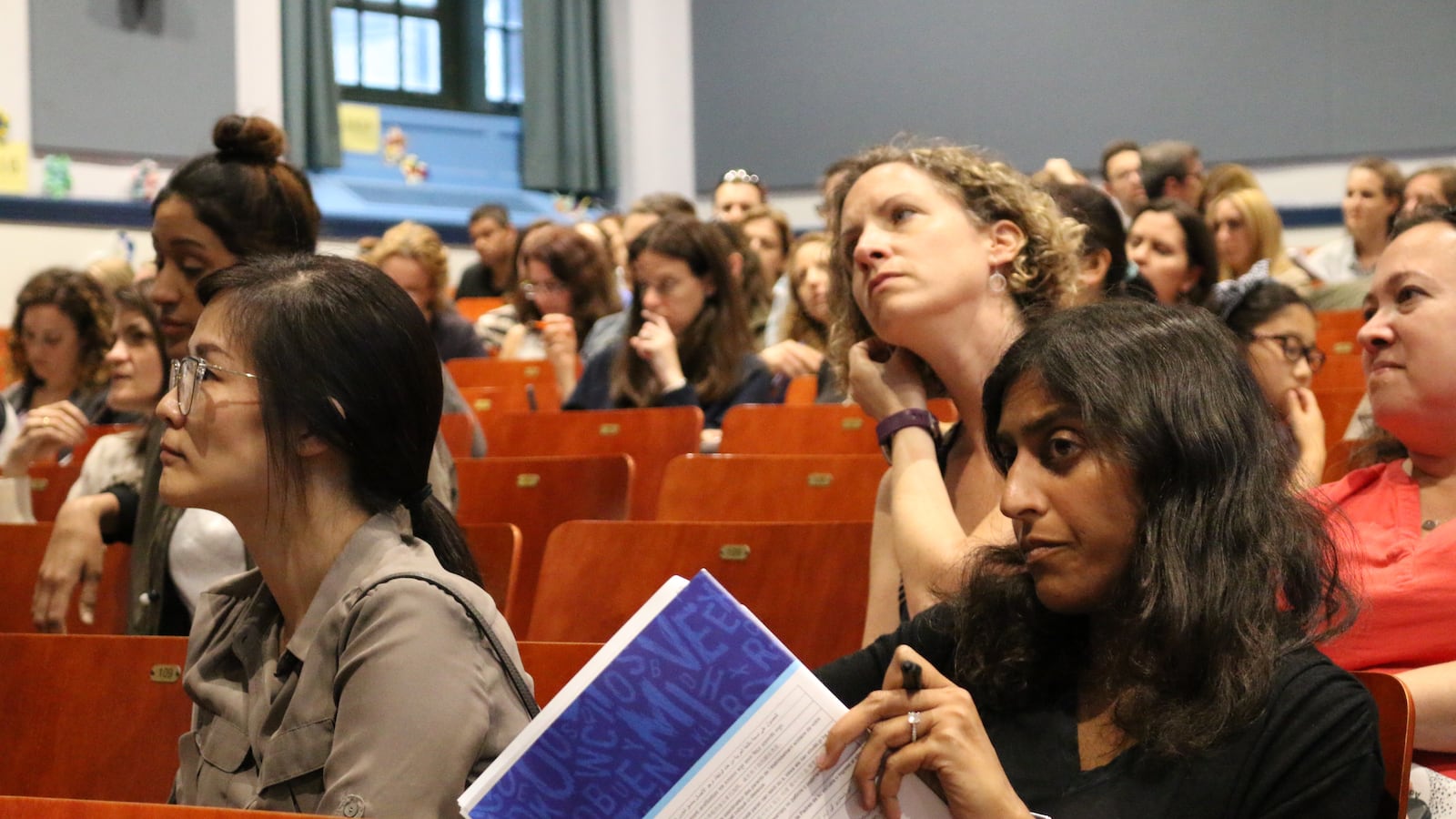In New York City, getting into middle school is often a competition over who has the highest grades, best attendance, and top test scores.
A new report found that 37 percent of the city’s middle school programs use competitive screens — selective criteria to determine admissions. Only 17 percent of programs rely on attendance zones based on where students live. That’s according to data crunched by New York Appleseed, a nonprofit that advocates for school integration, and the lawfirm Orrick, Herrington & Sutcliffe.
The findings provide a fresh challenge to the argument that New York City schools are segregated because neighborhoods are. In a system that offers families a wide degree of choice, other research has found that elementary schools would be slightly less segregated if families stuck with their neighborhood option.
Critics blame selective admissions for exacerbating segregation along racial, economic, and academic lines, by favoring families who have the time and resources to get their children to school on time or pay for tutoring to help them excel on tests, for example. Supporters say the system awards students’ merit and allows schools to meet the needs of high-achievers.
The breadth of screening in New York City is unique, and is often seen as a way to keep middle-class families in the school system. The use of competitive admissions ballooned under former Mayor Michael Bloomberg, who championed school choice policies.
While the city has been engulfed in a fierce debate over efforts to integrate its coveted specialized high schools, Appleseed hopes the report report will help shift energy towards middle schools, said Matt Gonzales, who leads diversity efforts for the nonprofit. Though the mayor’s plan for specialized high schools requires legislators to change state law — and must also survive a recently filed court challenge — Gonzales said the city could act quickly to make systemic changes in middle schools that affect far more children.
“For the majority of people in the city, they’re not benefiting from having a system of screens,” he said. “We’re using exclusionary admissions methods on 9-year-old kids. That’s just absurd.”
Appleseed calls for the elimination of middle school screening — a step that is sure to draw backlash from parents but that may have momentum right now. Competitive admissions in middle schools was recently eliminated in Brooklyn’s District 15, part of a wide-reaching integration plan for schools in neighborhoods such as the more affluent Park Slope and immigrant-heavy Sunset Park. And schools Chancellor Richard Carranza has criticized the practice, widely used at the high school level as well, as “antithetical” to public education.
“The chancellor’s made clear he’s taking a close look at how schools utilize academic screens and whether they serve as barriers to access and equity,” spokesman Doug Cohen wrote in an email. “Our schools are stronger when they reflect the diversity of our city.”
The Appleseed report looks at individual programs within middle schools, since a single school can have multiple programs with different entrance criteria. The education department estimates that about a quarter of middle schools are fully screened, meaning all students are chosen based on a competitive process.
But the prevalence of selective admissions in middle schools varies widely by borough and community school district, Appleseed found. In Manhattan, 59 percent of programs use a competitive screen, versus 21 percent in the Bronx.
Education department leaders have said the city is not adding any new screened programs. At the high school level, “limited unscreened” admissions were eliminated, which had given preference to students who showed interest in a school by, for example, showing up to an open house. The mayor also recently pledged to award grants to community school districts interested in developing their own integration plans.
“We know there is more work to do,” Cohen wrote.

